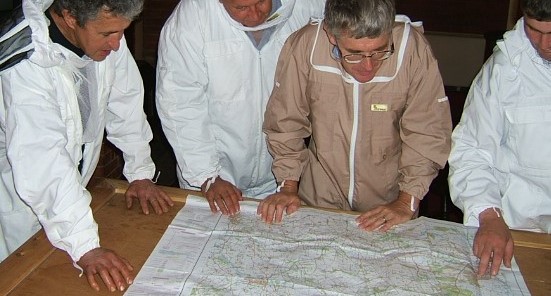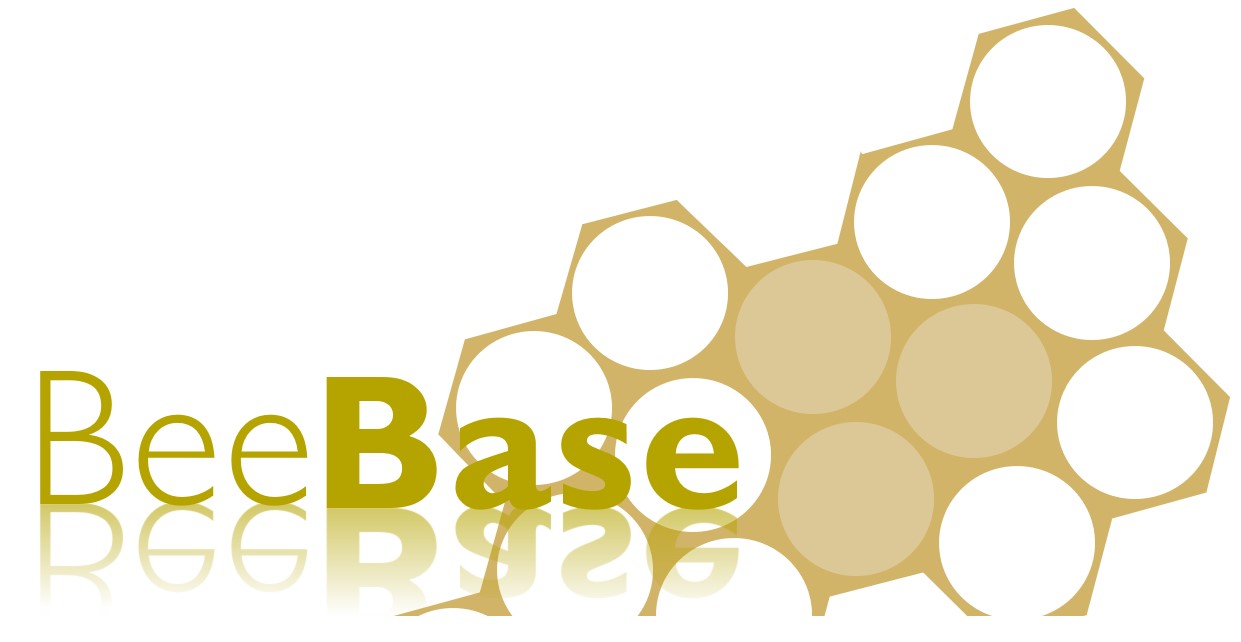The NBU, in liaison with Defra and the Welsh Government, has developed contingency plans and surveillance measures to be able to tackle an outbreak of an exotic pest or disease. Since 2003, Appointed Bee Inspectors have been increasing the Statutory Surveillance Programmes to specifically monitor for Aethina tumida - Small Hive Beetle (SHB), Tropilaelaps mites and for Vespa velutina - the Asian hornet.
The NBU uses BeeBase linked to Geographical Information Systems (GIS) to help prioritise this programme and target ‘At Risk Apiaries,' for example:
- Apiaries situated close to (<10km) civilian and military airports;
- Freight depots and ports of entry for fruit and other foodstuffs; and
- And apiaries belonging to bee importers and surrounding apiaries.

In addition, the NBU, in collaboration with local beekeepers and associations carry out annual contingency exercises in several regions. Our contingency plans detail the response to an exotic pest outbreak should either SHB, Tropilaelaps spp. or Asian hornet be found in the UK.
Emergency measures will be implemented to make a rapid assessment of the extent of infestation, followed by eradication of the pest if possible. However, if the pest is established and therefore cannot be eradicated, a containment and control policy will be implemented. The approach taken will depend highly upon the extent of the infestation. Similar arrangements will apply in Scotland and Northern Ireland.
Please follow the link to download our proposed action in the event of an introduction into England or Wales of an exotic pest or disease of honey bees:
- General Contingency Plan for Plant and Bee Health
- English Pest Specific Contingency Plan Small Hive Beetle and Tropilaelaps mite
- Welsh Pest Specific Contingency Plan Small Hive Beetle and Tropilaelaps mite
- English Pest Specific Contingency Plan for Asian Hornet (Vespa velutina nigrithorax)
- Welsh Pest Specific Contingency Plan for Asian Hornet (Vespa velutina nigrithorax)
The EFSA
Risk Assessment of Bee Pest Entry into the EU
The European Food Safety Authority (EFSA) has published a report outlining pathways that pose significant risk for the introduction of exotic pests such as SHB and Tropilaelaps. The risk assessment carried out by Animal Health and Welfare (AHAW) explores all the possible ways in which pests could enter the EU.
The EFSA pages give more information about the possible entry points including:
- Entry of pests through bee imports;
- Imports of bee products; and
- Unintended import of bees in non-bee consignments.
Also included is a paper which details the scientific opinion of the EFSA panel on the risk of entry of SHB and Tropilaelaps spp. in the EU.
EFSA Scientific Colloquium XVIII
In May 2013, the EFSA's Scientific Colloquium XVIII was held in Parma, Italy where more than 100 bee experts gathered to discuss multiple stressors that affect bee health. At the Colloquium, entitled "Towards a holistic approach to the risk assessment of multiple stressors in bees", four themes were discussed in detail:
- What needs to be protected in an agricultural context, in- and off-fields?
- What are the tools and challenges to assess impacts on pollination service from effects on bees?
- What impacts could be tolerated (i.e. on bees, crops and wild plants) over which spatial and temporal scales and what are the available methods to determine such impacts?
- What are the mitigation measures to protect bees, pollination services and plants?
More details on the event, including presentations and talks given by the panel are available here.
